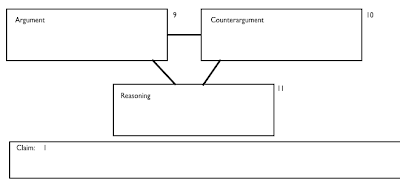.
.
.
.
.
Did you say Barbara Ehrenreich? I did. Truthfully, I couldn't come up with any other names.
This is a problem.
I appreciate the work of Barbara Ehrenreich. I do. Nobody has done more to bring the experiences of the working poor into the public discourse.
This is also a problem.
It is a problem that the voice for the working poor is not a voice of the working poor.
To say nothing allows our status quo to continue. By staying silent, the powerful maintain and benefit from the legacies of inequality.
But it is easy to pass from silence into silencing. Privilege amplifies voice. When those in power speak, it drowns out the voices of the marginalized.
We read Dr. Ehrenreich. We listen to Macklemore. We stop Kony. We celebrate V-Day.
The space between silence and silencing is difficult to navigate. It can't be done without intention. It is the smallest transition from speaking with to speaking for.
Dr. Ehrenreich should be writing books. Macklemore is entitled to make any music he wants.
However, along with acknowledging the role of our own privilege in making our voice heard, we need to use that privilege as a megaphone for the voices of the marginalized. Dr. Ehrenreich is in a position where she could publish an anthology written by the working poor. She could publicize or financially support Poor Magazine and the Poor News Network. It wouldn't take any effort for Macklemore to acknowledge other rappers that have confronted LGBT issues in hip-hop.
I recently watched the film Cracking the Codes: The System of Racial Inequity and it includes a scence where Dr. Joy DeGruy tells about a trip to the grocery store with her sister-in-law. The clip is on youtube.
I like this scene as an illustration of using privilege to amplify Dr. Joy DeGruy's voice. It is obvious that silence would have been the wrong tactic. Without the power of a privileged voice, it is quite likely the checker would have gotten more and more defensive. Her manager may have taken the checker's side. We see this all the time in school when a student may complain about a teacher and we close ranks around the teacher. Even if the situation was resolved, the checker may have gone home talking about the "angry Black woman" at the store.
On the other hand, the sister-in-law could have taken over. She could have re-centered the conversation around herself and away from Dr. DeGruy. She could have made the incident about her own favorite issue rather than the specific treatment of the checker towards Dr. DeGruy. The sister-in-law didn't attempt to put words in Dr. DeGruy's mouth or explicate the feelings of Dr. DeGruy. Her sister-in-law simply backed up Dr. DeGruy's statements and used her power to make sure Dr. DeGruy was heard.
It is a thin line. Sometimes I am too silent. Sometimes I'm too loud. When I'm silent it's because I don't notice or because I'm afraid to be noticed.
When I'm too loud it's because my own internalized hierarchies take over.
In many areas of my life I have power. I am a cis male. I am straight. I speak fluent English. I am educated and have never had to worry about when I will eat next.
The hardest thing to do isn't to turn up the volume so much that others are forced to listen. It is easy for me to be heard. The hardest thing to do is step aside and let others be heard in the space that I've been occupying.
------
1: I use "working poor" because that's the term used on Dr. Ehrenreich's website.














